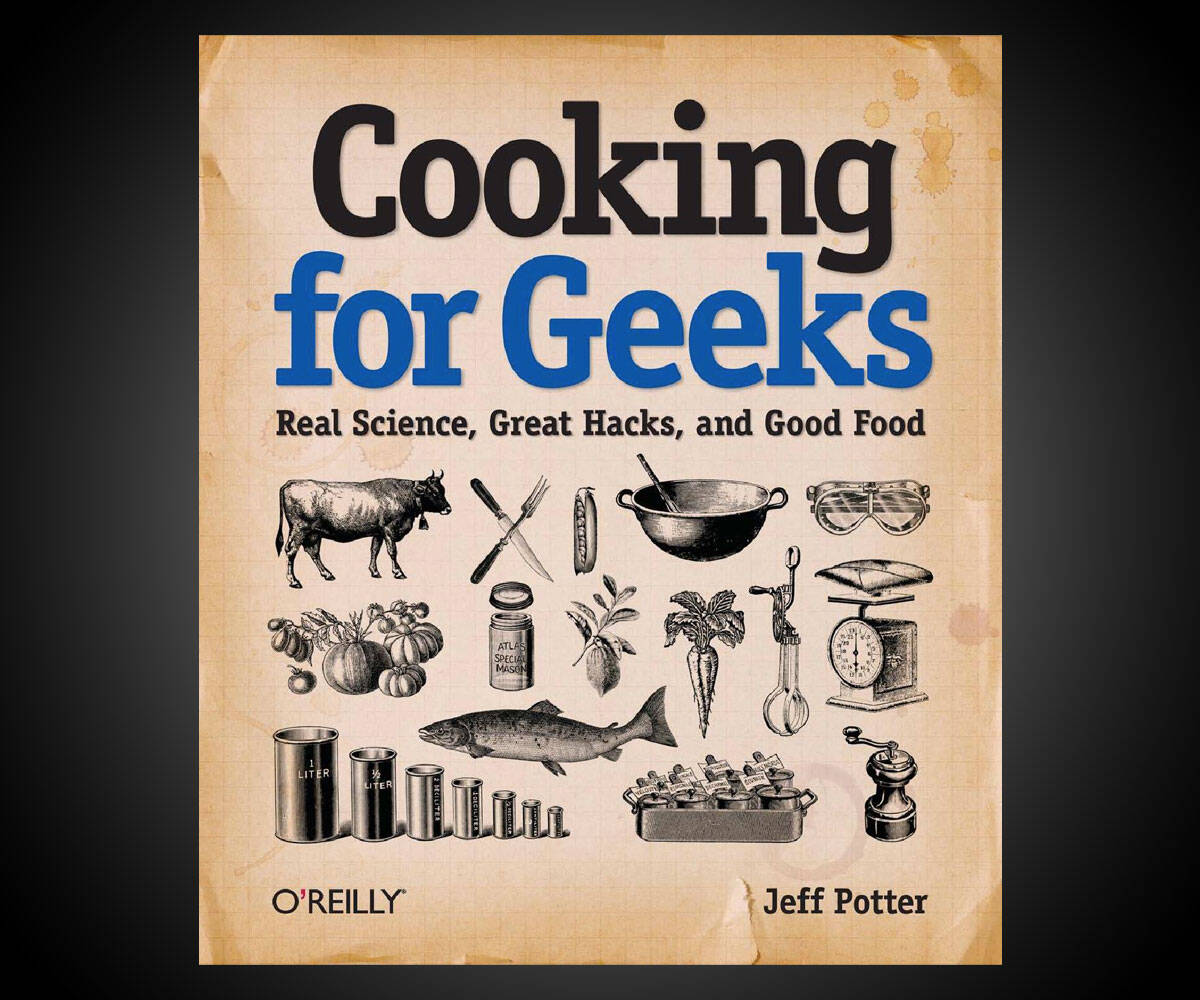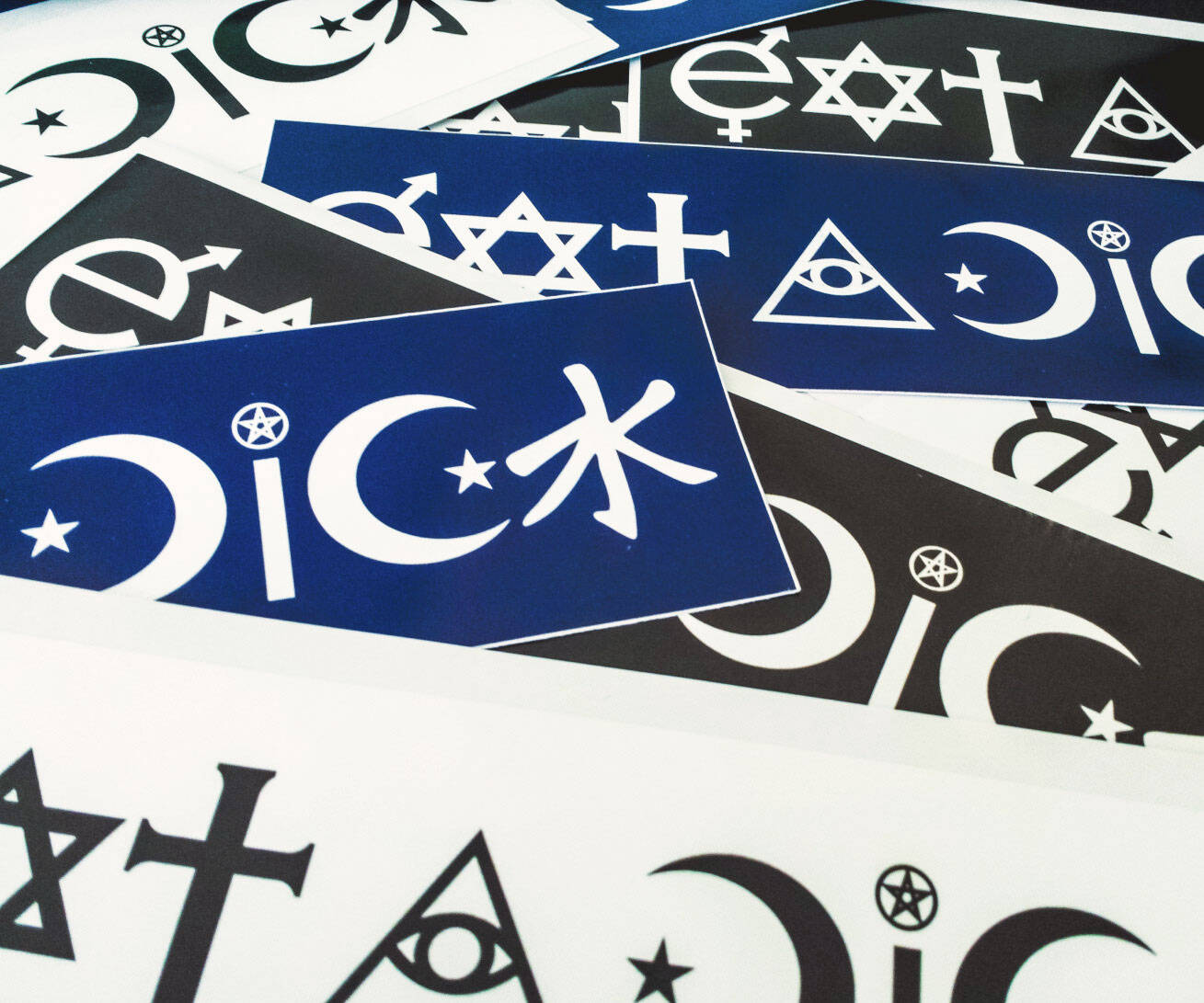Cooking for Geeks | |||||||||||||
| |||||||||||||
Product Description
Are you the innovative type, the cook who marches to a different drummer -- used to expressing your creativity instead of just following recipes? Are you interested in the science behind what happens to food while it's cooking? Do you want to learn what makes a recipe work so you can improvise and create your own unique dish?
More than just a cookbook, Cooking for Geeks applies your curiosity to discovery, inspiration, and invention in the kitchen. Why is medium-rare steak so popular? Why do we bake some things at 350 F/175 C and others at 375 F/190 C? And how quickly does a pizza cook if we overclock an oven to 1,000 F/540 C? Author and cooking geek Jeff Potter provides the answers and offers a unique take on recipes -- from the sweet (a "mean" chocolate chip cookie) to the savory (duck confit sugo).
This book is an excellent and intriguing resource for anyone who wants to experiment with cooking, even if you don't consider yourself a geek.
- Initialize your kitchen and calibrate your tools
- Learn about the important reactions in cooking, such as protein denaturation, Maillard reactions, and caramelization, and how they impact the foods we cook
- Play with your food using hydrocolloids and sous vide cooking
- Gain firsthand insights from interviews with researchers, food scientists, knife experts, chefs, writers, and more, including author Harold McGee, TV personality Adam Savage, chemist Hervé This, and xkcd
From Cooking for Geeks: Butternut Squash Soup
Purée in a food processor or with an immersion blender:
2 cups (660g) butternut squash, peeled, cubed, and roasted (about 1 medium squash)
2 cups (470g) chicken, turkey, or vegetable stock
1 small (130g) yellow onion, diced and sautéed
1/2 teaspoon (1g) salt (adjust to taste)
Notes
- The weights are for the prepared ingredients and only rough suggestions. So, prepare each item individually. For example, for the squash, peel it, then coat it with olive oil, sprinkle it with salt, and roast it in the oven at a temperature around 400–425 F / 200–220 C until it begins to brown. When you go to purée the ingredients, hold back some of the squash and some of the stock, taste the purée, and see which you think it needs. Want it thicker? Add more squash. Thinner? Add more stock.
- This soup by itself is very basic. Garnish with whatever else you have on hand that you think might go well, such as garlic croutons and bacon. Or top with a small dab of cream, some toasted walnuts, and dried cranberries to give it a feeling of Thanksgiving. How about a teaspoon of maple syrup, a few thin slices of beef, and some fresh oregano? Chives, sour cream, and cheddar cheese? Why not! Instead of purchasing items to follow a recipe exactly, try using leftover ingredients from other meals to complement the squash soup.
- If you’re in a rush, you can “jump-start†the squash by microwaving it first. Peel and quarter the squash, using a spoon to scoop out the seeds. Then, cube it into 1–2†/ 3–5 cm pieces, drop it into a glass baking pan that’s both oven and microwave safe, and nuke it for four to five minutes to partially heat the mass. Remove from microwave, coat the squash with olive oil and a light sprinkling of salt, and roast it in a preheated oven until done, about 20 to 30 minutes. If you’re not in a rush, you can skip the peeling step entirely: cut the squash in half, scoop out the seeds, add oil and salt, roast it for about an hour (until the flesh is soft), and use a spoon to scoop it out.
There are two broad types of cake batters: high- ratio cakes--those that have more sugar and water than flour (or by some definitions, just a lot of sugar)--and low-ratio cakes—which tend to have coarser crumbs. For high-ratio cakes, there should be more sugar than flour (by weight) and more eggs than fats (again, by weight), and the liquid mass (eggs, milk, water) should be heavier than the sugar.
Consider this pumpkin cake, which is a high-ratio cake (245g of pumpkin contains 220g of water--you can look these sorts of things up in the USDA National Nutrient Database, available online at http://www.nal.usda.gov/fnic/foodcomp/search/).
In a mixing bowl, measure out and then mix with an electric mixer to thoroughly combine:
1 cup (245g) pumpkin (canned, or roast and puree your own)
1 cup (200g) sugar
3/4 cup (160g) canola oil
2 large (120g) eggs
1 1/2 cups (180g) flour
1/4 cup (40g) raisins
2 teaspoons (5g) cinnamon
1 teaspoon (5g) baking powder
1/2 teaspoon (5g) baking soda
1/2 teaspoon (3g) salt
1/2 teaspoon (2g) vanilla extract
Transfer to a greased cake pan or spring form and bake in an oven preheated to 350 F / 175 C until a toothpick comes out dry, about 20 minutes.
Notes
- Try adding dried pears soaked in brandy. You can also hold back some of the raisins and sprinkle them on top.
- One nice thing about high-ratio cakes is that they don’t have much gluten, so they won’t turn out like bread, even with excessive beating. With a total weight of 920 grams, of which only roughly 20 grams is gluten, there just isn’t enough gluten present in this cake to give it a bread-like texture. There’s also a fair amount of both sugar and fats to interfere with gluten development.
- Cooking for Geeks: Real Science, Great Hacks, and Good Food by Jeff Potter (Aug 9, 2010)
- On Food and Cooking: The Science and Lore of the Kitchen
- The Science of Cooking: Every Question Answered to Perfect Your Cooking
- Cooking for Geeks: Real Science, Great Cooks, and Good Food
- Culinary Reactions: The Everyday Chemistry Of Cooking
- The Pun Also Rises: How the Humble Pun Revolutionized Language, Changed History, and Made Wordplay More Than Some Antics
- The Science of Good Cooking: Master 50 Simple Concepts to Enjoy a Lifetime of Success in the Kitchen (Cook's Illustrated Cookbooks)
Features
Top Reviews
Best book for REALLY understanding cookingby J (5 out of 5 stars)
December 1, 2014
Everything you ever wanted to know about why cooking works the way it does. I think it has really enhanced my understanding of what is happening when I cook, and has allowed me to improve some of my favorite dishes and even successfully make my own bread. This is published O'Reilly, the same that does the "Head First" programming books. It has great explanations with a little humor tossed in. I would recommend for any foodie interested in the chemistry and physics behind their meals, or for any scientifically-minded person interested in getting better at cooking, and those just looking for some neat knowledge!
The fun side of cooking
by reg (5 out of 5 stars)
December 9, 2011
I like cookbooks, not just for the recipes, but also to read. This one meets that need perfectly. It's such an interesting look at food and its preparation. I was looking for a Christmas gift for my son-in-law when I found this. He's a former IT guy and is now a nurse. He loves the creative side of cooking. One Christmas, he made bacon ice cream for all of us (not the same way that was demonatrated in the video above!). I can't wait to see his reaction to this. I have looked through the book and have just ordered a second one for my son. He was a bio-med science major in college and is now an optometrist. He, too, enjoys the creative side of cooking. I think he will also enjoy it. I am debating on getting one for my daughter and other son-in-law. They are both Hotel/Restaurant majors/grads. My daughter now teaches in the program. It's been awhile since she's taught the class on food born illnesses, but that information is in here as well. Might be a good resource for them.
I admit to not having cooked any of the recipes. I've have read some interesting ones, however. I have really enjoyed the odd tips and hints (one was putting the muffin tin on the open door of the dishwasher to spray it with cooking spray). I have a feeling this will be one of those books passed around after opening on Christmas. Good thing we will have two!
Wow! My current favorite cookbook
by T. Robinson (5 out of 5 stars)
October 23, 2010
A fellow computer geek from SecondLife recommended this book to me, and what a cookbook it is. It's nearly impossible to write a book on cooking basics, yet at the same time put in things to satisfy even experienced cooks, but this book has it all.
One thing you must keep in mind is that some of the humor might get lost on you. That "u can haz cheezburger" might be a mis-spelling to some in the section on making burgers, it's a great inside joke to others. (I need to go back and check the book to see if it says "I made you a cookie, but I eated it.") To the sheer delight of both geeks and innovative cooks, many warrantee-voiding hacks to kitchen equipment are presented (like how to turn your home oven into a serious pizza oven). There a many very good interviews with all sorts of experts in cooking and science related fields (including Adam Savage of "Mythbusters" fame).
But the section of the book that blew my mind was the whole food chemistry section. And I don't just mean good general knowledge about protein chains or Maillard reaction that you'd learn on shows like "Good Eats" (not that "Cooking for Geeks" doesn't have that, too), but I mean bizarre things like "meat glue" and unusual jelling agents and maltodextrin+oil combinations. As a result that chapter, I've ordered Experimental Kit Texturas so look for my review of that after I get it.
I'm already planning this book as a Christmas gift for a few people.
The Science of Cooking You Can Really Use!
by JK (5 out of 5 stars)
November 13, 2010
This book is definitely not for everyone. It's exciting and interesting if you are someone who asks a lot of "why" questions. If you want a bunch of great recipes that are easy to use, buy any of Mark Bittman's cookbooks (they're awesome). If you want to learn more about what's happening under the covers, then this book will keep you riveted. Jeff Potter has done something I never thought possible - explain the science behind cooking in such a way that it makes sense AND you can easily apply it! Let me start by saying that culinary arts is not something I excel at but as a technical person, I enjoy learning and experimenting with the the science behind cooking and you'd think I would be a better cook as a result, but I never seem to be able to cross the chasm of using the knowledge in a beneficial manner. However, with "Cooking for Geeks" I finally made a loaf of homemade bread that didn't immediately become hard tack for the birds in the backyard!! The explanation of the chemistry in taste, flavorings, and composition was fascinating, but also incredibly helpful in tempting me to experiment with what might seem to be odd pairings of ingredients. I've often thought cooking is really about technique, not so much about recipes, and Potter's book certainly arms you with the foundation to go forth and create in the kitchen. Finally, I found the organization of the book to be well thought out therefore more useful; lots of little snippets so reading and reference are very easy - Potter gets the point quickly and efficiently.
Cooking science made simple
by Luci Ayyat (5 out of 5 stars)
May 10, 2013
I absolutely loved this book! It has all the complexities about the science behind cooking, but put in simple terms for the non-chef to understand. I learned so much from reading this, and I plan to follow along some of the blogs mentioned in the book to keep my understanding up to date. If you've ever wondered WHY the meat turns brown, or WHY the bread rises - this is the book you need to read. Even something as simple as the correct way to scramble eggs gets explained so that lightbulb goes on inside your head (over low heat, no milk, constantly stirred with something like chopsticks in a non-stick pan - you get the creamiest eggs with this method and the book explains why)
If you love to cook and want to go beyond the recipes to create your own culinary masterpieces - read this book. Not only does it contain great info, it's fun to read as well.
for great justice
by thriftysicillian (5 out of 5 stars)
October 27, 2010
This book is a perfect blend of teaching and explanation that most cookbooks do not have. I've tried for years and years to follow cooking recipes to no avail trying to understand why it didn't work. No cookbooks really give you an explanation of why certain ingredients are used over others- you almost always learn to experiment and then fail time and time again, wasting money and time. This book has finally filled some sort of chasm that chefs have left wide open. Instead of studying food science, I just read this book to get a brief overview of what an item does in my cooking. For example : I never understood the difference between baking powder and baking soda - until now.
On top of the explanations and witty anecdotes, he also provides many intriguing recipes that I otherwise never thought I could make. One example of this was his recipe for homemade soda. I just recently finished it, and it was delicious. Really it's not I couldn't find recipes like these online - but there are so many and seldom make near as much sense as the one's he's provided here.
Bravo Sir.
Cool, fun, and it prompted us to get an IR Thermometer
by M. D. HEALY (4 out of 5 stars)
January 26, 2013
This morning my wife and I ate perfectly cooked pancakes and sausage, because as recommended by this book we got an IR thermometer -- a device that measures surface temperatures by sensing the infrared radiation they emit. So we could keep the skillet temperature between 375F and 400F throughout the cooking time.
This book is full of practical tips that I have not seen elsewhere. For instance, to check your oven thermometer, put a small amount of sugar on some aluminum foil. Preheat the oven to 350F. Once the heat has cycled off, put the sugar in the oven and let it sit there for a few minutes -- it might brown slightly but it should not melt. Now raise the temp to 375F, and soon the sugar should melt and caramelize. If the sugar melts with the oven set to 350F, or does not melt with the oven set to 375F, then you know your oven temp is not quite correct and you should adjust your settings accordingly.
Fascinating "CookTextBook" to Learn of the Science Behind Cooking
by One Reviewer (5 out of 5 stars)
May 21, 2014
I purchased this for one of our teen daughters who is not only a fantastic cook, but also quite intellectual and as a wonderfully insatiable appetite for how things work and why. This book is a wonderful blend of some science, chemistry and cooking mixed together perfectly. This entertaining but absolutely educational book is neither a full-fledged cookbook or science book, but somewhere in between with some definite technical writing throughout that may stretch your brain a bit, at least it did mine. At any rate, both she and I have enjoyed learning some very cool things that we never knew before as well as some tasty recipes that are sure to please, while the science portion feeds your brain well!
I liked this book very much
by Albert Reingewirtz (5 out of 5 stars)
April 27, 2014
I am an amateur cook with zero training in cooking. I always try things sometimes they are miserable failures and sometimes they are so good but when I want to do it again, many times I do not remember what I did then. This book was written for people like me who try things for the joy of it. I am a little bit like the author. I make my own Kefir using a Styrofoam container lined with a heating pad on low. A gallon of 1% milk with half a glass of a previous Kefir in the milk. ¾ of a day later I turn the heat off for the rest of the day. In the refrigerator it goes. About 4 days later I poor the whey out. Shake the gallon container and wonder of wonder a gallon of Kefir! Now you know why I like this book. (This recipe is mine and not in the book).
Loved it, but it is truly "cooking for geeks"
by Magnus Gille (5 out of 5 stars)
August 30, 2011
This book is tricky. You'll either love it or hate it. Your spouse may or may not love you for owning it.
This is not a recipe book. This is a book about cooking. Cooking for people like me who sometimes can be more interested in the why than the how. I don't need a step by step "add a pinch of salt and raise the temperature to medium", I want a "cook the steak to 150F" in a water bath and this is why it tastes good. I want the answer to "how do you cook the perfect egg" and so on and I want a good detailed answer. Temperatures, times etc. Not so much step by step recipes.
Downsides: You'll figure out that you want to buy a water bath, vacuum sealers and more toys for your kitchen. Buying this book will lead to more purchases of expensive kitchen equipment which your spouse might not be aroused by.
Customers Who Bought This Item Also Bought
*If this is not the "Cooking for Geeks" product you were looking for, you can check the other results by clicking this link








